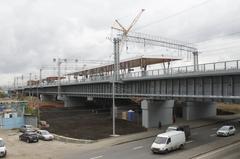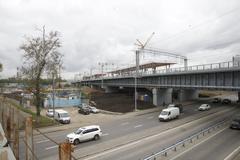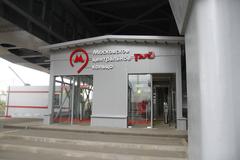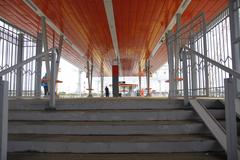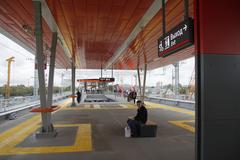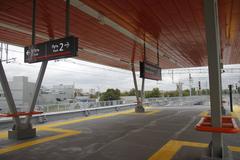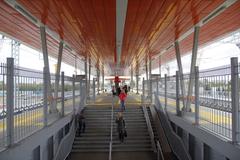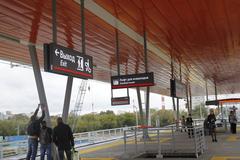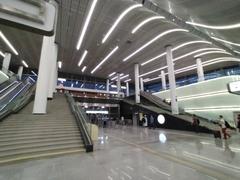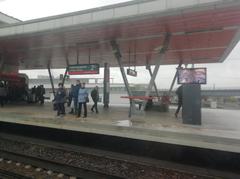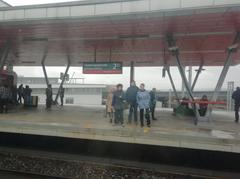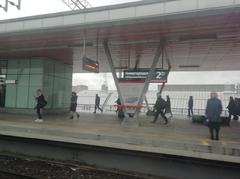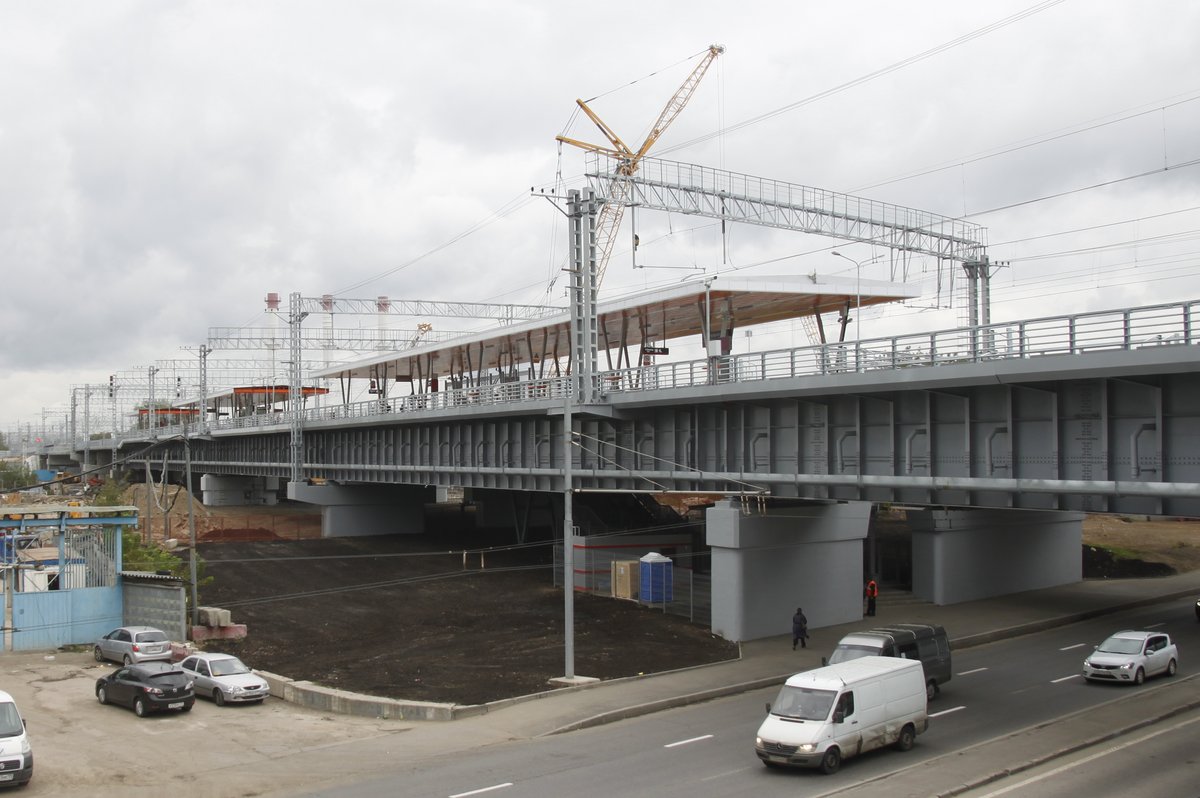
Nizhegorodskaya Visiting Hours, Tickets, and Historical Sites in Moscow
Date: 14/06/2025
Introduction
Nizhegorodskaya, situated in southeastern Moscow, is a district where centuries of Russian history intersect with the city’s ongoing urban transformation. Originally rooted in the industrial boom and the pivotal Nizhegorodsky railway that connected Moscow to the Volga region, Nizhegorodskaya has evolved from an industrial and transportation hub into a vibrant urban area. Today, it boasts state-of-the-art transport infrastructure, dynamic cultural venues, and diverse residential developments. The district’s modern transport hub, including the Moscow Central Circle (MCC) station, has spurred urban renewal, transforming Nizhegorodskaya into both a gateway to Moscow’s history and a model of contemporary city life.
This guide provides a comprehensive overview of Nizhegorodskaya and its environs, including visiting hours, ticketing details, accessibility, and travel tips. Whether you are drawn by the district’s layered history, architectural landmarks like the Nizhegorodskaya Tower, or want to explore the cultural vibrancy of nearby Nizhny Novgorod, this article will equip you with all the essential information for a rewarding visit.
For planning and updates, consult resources such as the Moscow Master Plan 2025, Wikipedia: Nizhegorodskaya (Moscow Central Circle), and the Official Moscow historical sites portal.
Table of Contents
- Historical Origins of Nizhegorodskaya
- Soviet Era Transformation
- Post-Soviet Urban Evolution
- Nizhegorodskaya Transport Hub
- Urban Renewal and Social Impact
- Architectural and Cultural Significance
- Practical Visitor Information
- Nizhegorodskaya Tower: Historical Landmark
- Nizhny Novgorod: Key Sites and Visitor Guide
- Nizhegorodskaya Moscow: Complete Visitor’s Guide
- Summary and Travel Tips
- References and Further Reading
Historical Origins of Nizhegorodskaya
Nizhegorodskaya derives its name from the historic Nizhegorodsky District, which emerged around the Nizhegorodsky railway and key trade routes between Moscow and Nizhny Novgorod. The area developed rapidly in the late 19th and early 20th centuries with the construction of the original Nizhegorodsky railway station in the 1860s, a vital link for goods and passengers (Wikipedia: Nizhegorodskaya (Moscow Central Circle)). This industrial legacy remains visible today in the district’s architectural mix and infrastructure.
Soviet Era Transformation
During the Soviet period, Nizhegorodskaya experienced significant expansion as Moscow industrialized. The extension of the metro and the construction of large housing projects integrated the district more closely with the city’s urban fabric. Soviet planners implemented functional zoning, separating industry, housing, and transportation, a structure that still influences the district. Major factories and logistics centers provided jobs and reinforced Nizhegorodskaya’s working-class identity (Moscow Master Plan 2025).
Post-Soviet Urban Evolution
After 1991, Nizhegorodskaya saw rapid change as Russia moved to a market economy. Many industrial assets were privatized or repurposed for commercial and residential use. This shift mirrors Moscow’s broader redevelopment trends, with former factories becoming offices, shopping centers, and apartments (Introducing Moscow History). The opening of the MCC station in 2016 further redefined the district as a transport hub and urban center (Wikipedia: Nizhegorodskaya (Moscow Central Circle)).
Nizhegorodskaya Transport Hub
The Nizhegorodskaya MCC station, opened in 2016, is a vital interchange linking the MCC, the Gorkovsky suburban line (added in 2020), and the Nekrasovskaya metro line (added in 2020). Future expansion will include the Bolshaya Koltsevaya line. This connectivity has attracted investment, stimulated residential and commercial growth, and contributed to decentralizing Moscow’s urban development (Wikipedia: Nizhegorodskaya (Moscow Central Circle), Moscow Master Plan 2025).
Urban Renewal and Social Impact
Since 2017, Moscow’s Urban Renewal Initiative has aimed to replace dilapidated Soviet-era housing, upgrade utilities, and improve public spaces. While some displacement has occurred (The Moscow Urban Renewal Initiative), new residential complexes, parks, and pedestrian areas have enhanced the district’s quality of life and sustainability.
Architectural and Cultural Significance
Nizhegorodskaya features an eclectic mix of Soviet utilitarian buildings and modern architecture. Many old industrial buildings have been adaptively reused as cultural centers or commercial spaces, adding vibrancy to the area. The district’s multicultural population contributes to a burgeoning scene of cafes, galleries, and community venues, reflecting Moscow’s trend of revitalizing its former industrial areas.
Practical Visitor Information
Visiting Hours and Tickets
- Nizhegorodskaya MCC Station: Open daily, 5:30 AM – 1:00 AM
- Tickets: Purchase at metro kiosks, ticket machines, or via the Moscow Metro app. Standard fares apply, including free transfers within the system.
Accessibility
The station and surrounding hub are fully accessible with elevators, ramps, and tactile guidance for the visually impaired.
Nearby Attractions
Explore local parks, markets, and community centers in the Nizhegorodsky District. The district’s transport links provide quick access to central Moscow sites such as Red Square and the Kremlin.
Guided Tours and Events
Local tour operators offer walks focused on industrial heritage and urban renewal. Repurposed industrial buildings often host exhibitions and seasonal events.
Travel Tips
- Visit on weekdays for fewer crowds.
- Use contactless payments for convenience.
- Sample local cuisine in the district’s cafes and eateries.
Photographic Spots
The elevated MCC station offers panoramic views of the district’s diverse architecture, ideal for photographers.
Nizhegorodskaya Tower: Historical Landmark
Overview
The Nizhegorodskaya Tower, dating to the late 16th century, is a key monument in Moscow’s architectural heritage. Once part of the city’s defensive walls, it now stands as a cultural symbol.
Visiting Hours
- Tuesday–Sunday: 10:00 AM – 6:00 PM
- Closed Mondays and public holidays
- Last entry: 45 minutes before closing
Tickets
- General admission: 300 RUB
- Reduced (students/seniors): 150 RUB
- Children under 7: Free
- Purchase online or at the site via the Official Moscow historical sites portal
Guided Tours and Events
Tours at 11:00 AM and 3:00 PM daily; special events are held seasonally.
Directions
- Metro: Nizhegorodskaya (Nekrasovskaya/Bolshaya Koltsevaya lines)
- Rail: MCD-2 line to Nizhegorodskaya
- Buses/Trams: Multiple routes stop nearby
Nearby Attractions
- Kolomenskoye Estate (UNESCO World Heritage)
- The Kremlin and Red Square
- Tretyakov Gallery
Accessibility
Ramps and tactile guides are available. Staff can assist and provide multilingual information.
Photographic Spots
Sunset views from the tower and the adjacent park are exceptional for photography.
FAQ
-
Are there photography restrictions?
Photography is allowed, but flash and tripods are prohibited inside. -
Is the tower child-friendly?
Yes, with educational materials for younger visitors. -
Are English tours available?
Yes, on prior request.
Visitor Tips
- Weekdays are quieter.
- Wear comfortable shoes for stairs.
- Combine your visit with other local historical sites.
Nizhny Novgorod: Key Historical Sites and Visitor Guide
Nizhny Novgorod Kremlin
- Hours: Daily, 10:00 AM – 6:00 PM
- Tickets: Kremlin grounds free; museum entry 150–300 RUB
- Accessibility: Wheelchair accessible with assistance (visitnn.ru)
Monastery of Macarius
- Hours: 9:00 AM – 5:00 PM
- Entry: Free
- Tours: Available on request
St. Trinity’s Diveyevo Convent
- Hours: 8:00 AM – 7:00 PM
- Entry: Free
Cultural Institutions
- Museum of History of Artistic Trades: 10:00 AM – 6:00 PM (closed Mondays), 200 RUB
- Literary Museum of Maxim Gorky: 10:00 AM – 5:00 PM, 150 RUB
- National Centre of Contemporary Art: 11:00 AM – 7:00 PM (closed Tuesdays), 250 RUB
Local Life
- Bolshaya Pokrovskaya Street: Main pedestrian thoroughfare for shops and cafés.
- Local Cuisine: Try borscht, pelmeni, and visit “Khudozhestvennye Promysly” for souvenirs.
Visitor Tips
- Suggested itineraries:
- One day: Kremlin, Literary Museum, Bolshaya Pokrovskaya, Volga cruise
- Two days: Add Macarius Monastery and Diveyevo Convent
- Transport: Efficient metro, buses, and river cruises available.
- Best time to visit: May–September for festivals; winter for festive markets.
- Safety & Etiquette: Standard precautions; tipping 5–10% is customary.
FAQ
- Are tours available? Yes, book through visitnn.ru
- Are sites accessible? Major sites have wheelchair access.
Useful Links
Nizhegorodskaya Moscow: Complete Visitor’s Guide
Main Attractions
- Nizhegorodskaya Metro Station: Major interchange (Bolshaya Koltsevaya/Nekrasovskaya lines), fully accessible (Moscow Metro)
- Nizhegorodskaya Street: Open access to a mix of Soviet and modern buildings.
- Church of St. Nicholas in Kuznetsy: 9:00 AM – 6:00 PM, free entry.
Proximity to Moscow Landmarks
- Red Square & Kremlin: ~20–30 minutes by metro (PlanetWare)
- Zaryadye Park: Open 24/7, free
- Gorky Park & Muzeon: Year-round access
Local Markets and Food
- Danilovsky Market: Daily, 9:00 AM – 8:00 PM
- Cafés/Bakeries: Plentiful, many with English menus
Parks and Green Spaces
- Sokolniki Park: Open dawn to dusk
- Kuskovo Estate Museum: 10:00 AM – 6:00 PM, 250 RUB
Festivals
- Moscow International Film Festival: April
- Moscow Estates Festival: Seasonal
- Winter/Spring Markets: Food, crafts
Practical Tips
- Getting Around: Metro is efficient with English signage (ThePlanetD)
- Accessibility: Modern stations are accessible; older sites may vary
- Safety: Generally safe; watch valuables (Moscow City Official)
- Language: English common in tourist areas; Russian helpful (Travellikeaboss.org)
- Money: Ruble is the currency; cards widely accepted
- Accommodation: Range from luxury hotels to hostels (HikersBay)
Local Insights
- Greet with a smile and handshake
- Tip 5–10% in restaurants
- Venture onto side streets for hidden gems
FAQ
- District accessibility? Streets open anytime; sites typically 9 AM–6 PM
- Tickets? Metro kiosks or Troika card; attractions online or on site
- Disability access? Modern facilities accessible; older ones may not be
- Guided tours? Available via private guides or local agencies
Summary and Travel Tips
Nizhegorodskaya stands as a testament to Moscow’s blend of historical legacy and modern innovation. From its railway and industrial roots to its current status as a bustling transport and cultural hub, the district offers visitors a unique perspective on Moscow’s evolution. Access to key landmarks, vibrant local culture, and seamless transport connections make Nizhegorodskaya an ideal base for exploration.
The connection to Nizhny Novgorod further enriches the experience, linking Moscow’s urban energy with Russia’s broader heritage. Use digital tools like the Audiala app for real-time updates and guided tours, and consult official resources for the best experience (Moscow Master Plan 2025, Wikipedia: Nizhegorodskaya, Official Moscow historical sites portal).
References and Further Reading
- Wikipedia: Nizhegorodskaya (Moscow Central Circle)
- Moscow Master Plan 2025 by Ludmila Tkachenko
- Introducing Moscow History
- The Moscow Urban Renewal Initiative
- Official Moscow historical sites portal
- PlanetWare: Top Rated Tourist Attractions in Moscow
- ThePlanetD: Things to Do in Moscow
- HikersBay: Moscow Tourist Information
